#1

29th Dec 2011 at 9:34 PM
Last edited by Ouerbacker : 7th Apr 2012 at
8:16 AM.
Reason: I spelled tutorial wrong by accident.
 Ouerbacker's how to paint dry seaside terrain
Ouerbacker's how to paint dry seaside terrain
Great terrain is not about having the most beautiful terrain , the best sculpting, or even great painting. Instead, it is about having a good mix ,of terrain and paint, and a realistic look . Basing you world off of real world images taken from airplanes or satellite images from Google earth is highly recommended. This will give you a much better idea about how you terrain should actually look .It is amazing how much easier this way is over the normal way of just dreaming it up.
Most worlds are based of a rough sketch that shows the basic road layout and the placement of lots. I believe that a world should never be drawn out this way . With this method the end result is usually very unrealistic . The world's overall shape is ,oftentimes,very chunky and ugly. Many of the natural rules of erosion and shape are completely bypassed . Where a series of soft hills , with little drainage ditches, should be placed the builder has, instead, opted for an over smoothed patch of overly green grass or ,even worse, a vertical cliff with a terribly stretched texture.A world's terrain should be drawn out before any of the roads are even thought of.
Textures are a very important part of CAW, yet most cawders just use the bland set of default textures. Those textures might have been pretty good for part of Sunset Valley but for you, as a cawder , can do much -much- better. I would recommend searching for textures on the internet,any tiled texture will work with CAW, or just checking out the list of custom texture links over at the official CAW forums. If you are going for a truly individual and unique world set your sights on the first of those two options.
Here is a link to a good website with many wonderful tileable textures.
http://www.cgtextures.com/
For those who don't want to go internet searching here is a link to the list over at the forums.
http://forum.thesims3.com/jforum/posts/list/181739.page
This is going to be a simple tutorial about how to build terrain in this style.
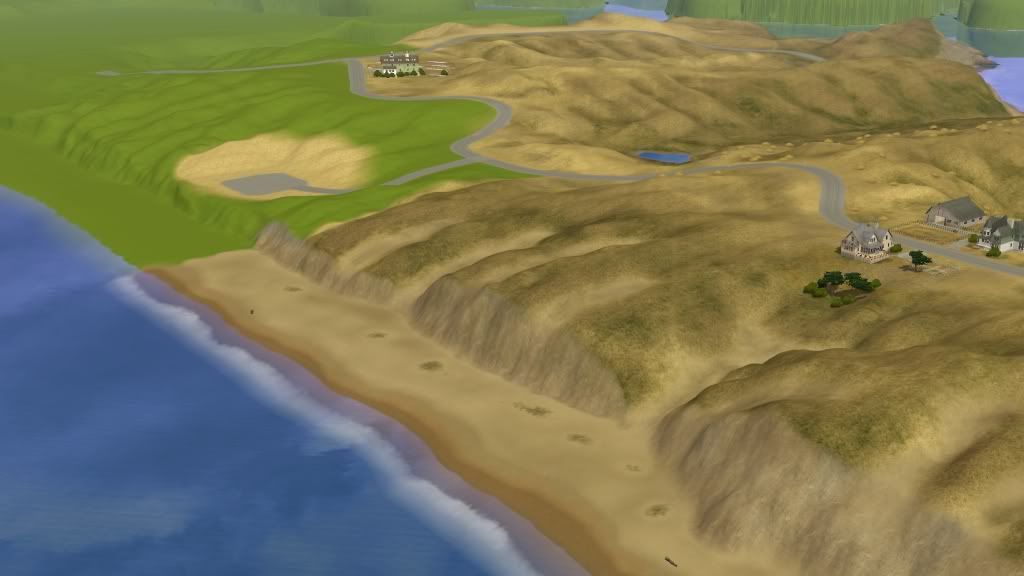
Everything in our world start with a base; CAW is no different. Before any trees or paints are placed all of the terrain in that section should be sculpted. So far I have done the rough sculpting on our little section of tutorial terrain . I did break the no paint rule by laying out the parking lot but ,well, that's one of the few exceptions. If I were to put the parking lot in after the terrain was done it would not fit in well with the terrain. By putting it in now we are insuring that it and the terrain will function together in a harmonious way .
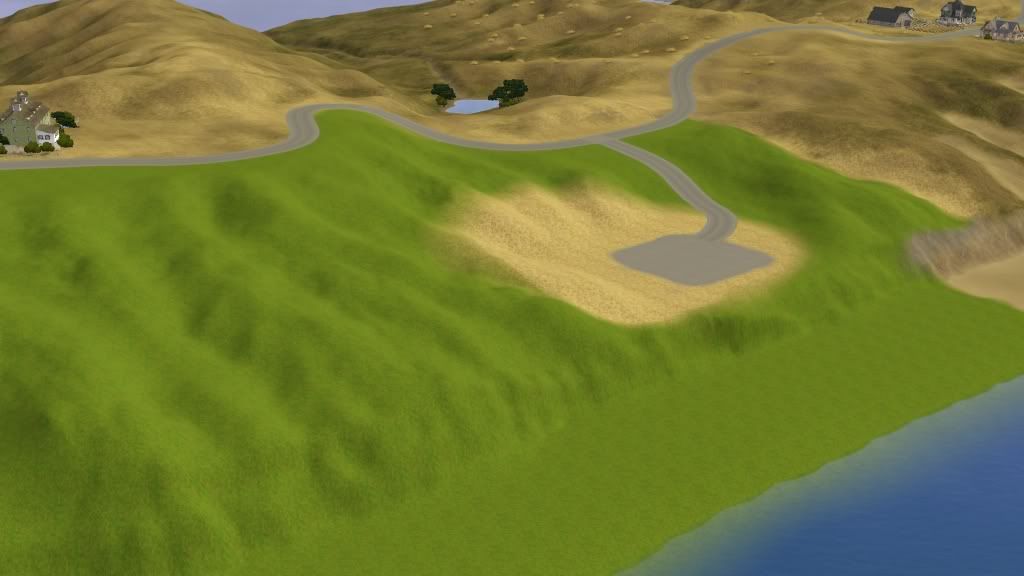
Here is what it looks like after a little touchup . The ridges are much smoother and the rock is rockier.
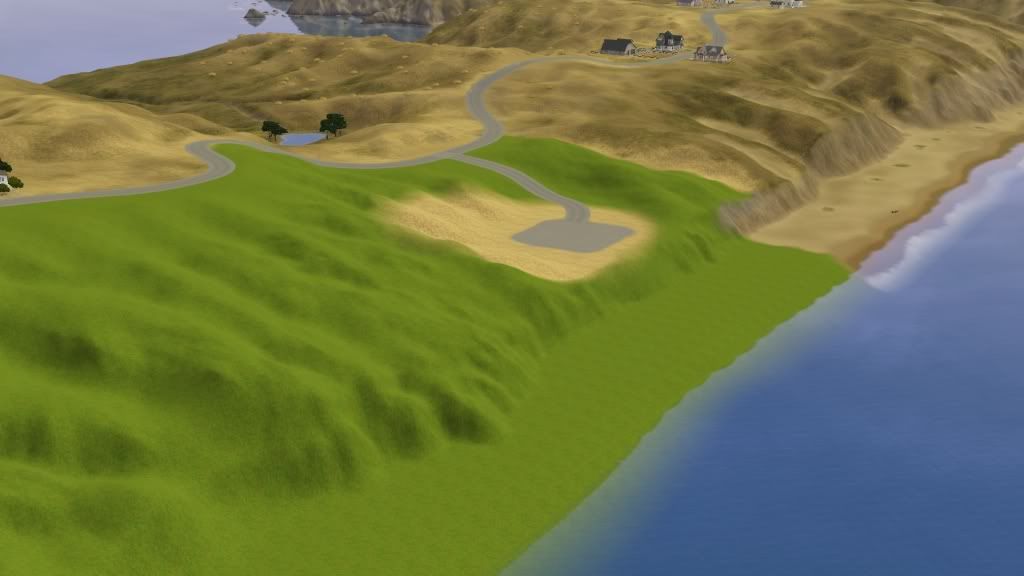
,more fine tuning . I laid the path and adjusted the cliffs . It's about time to start painting it.

Here is the first layer of painting.As you can tell it very rough. It shows were the grass ,sand, rock, and road will be located. For this I would recommend having your size set to about 20 , your opacity set to about 15 , and your falloff set at anything below about 10.
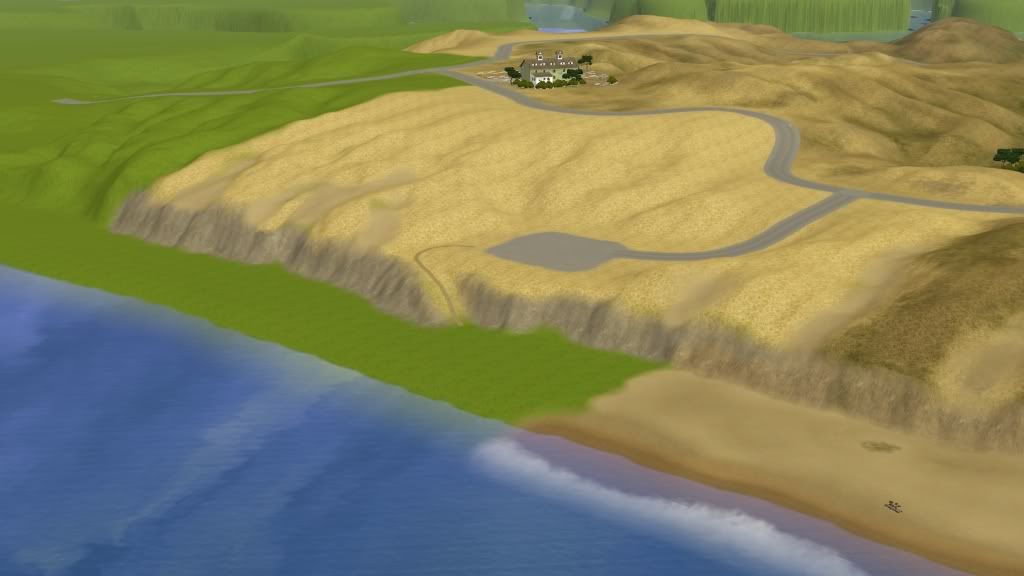
We've finally gotten around to laying the separate shades of grass. They should go from dark, close to the water, to light , furthest from the water. You should start with large flowing clicks of the paintbrush and end with quick light clicks. The size of your paintbrush should start at about 40 and end at around ten. Your opacity should probably not exceed anything over about 20 and , as usual, the falloff should be between 0 and 5.
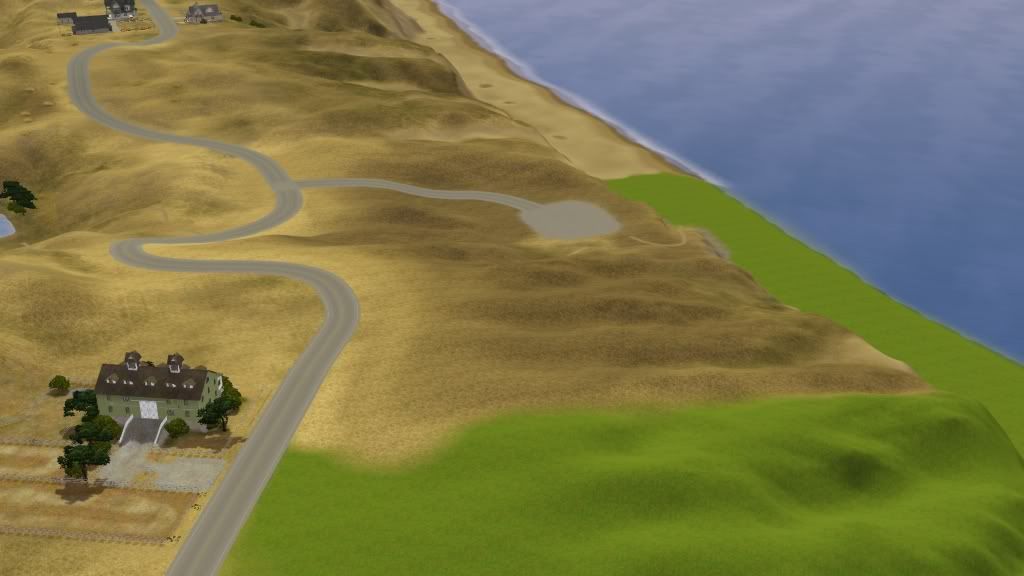
Once that is done it's time to add a shade of green to the mix . This will take away some of the yellow and help define the terrain's shape. Running from the coast ,the green should be placed in valleys and crevices between the hills. I would recommend using this color to bring out areas of erosion . The paint setting for this part should be on the lower end of those from the previos step .
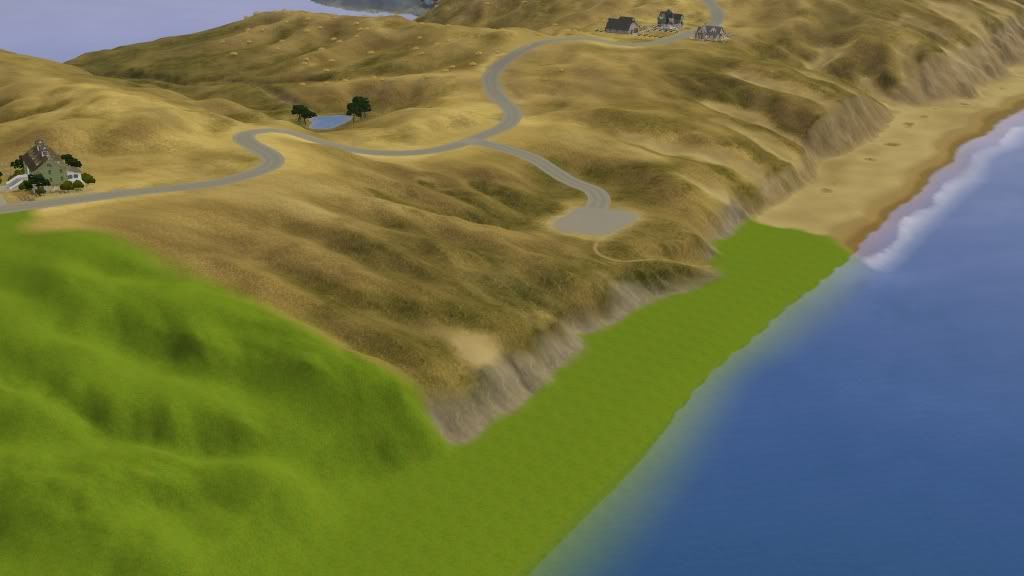
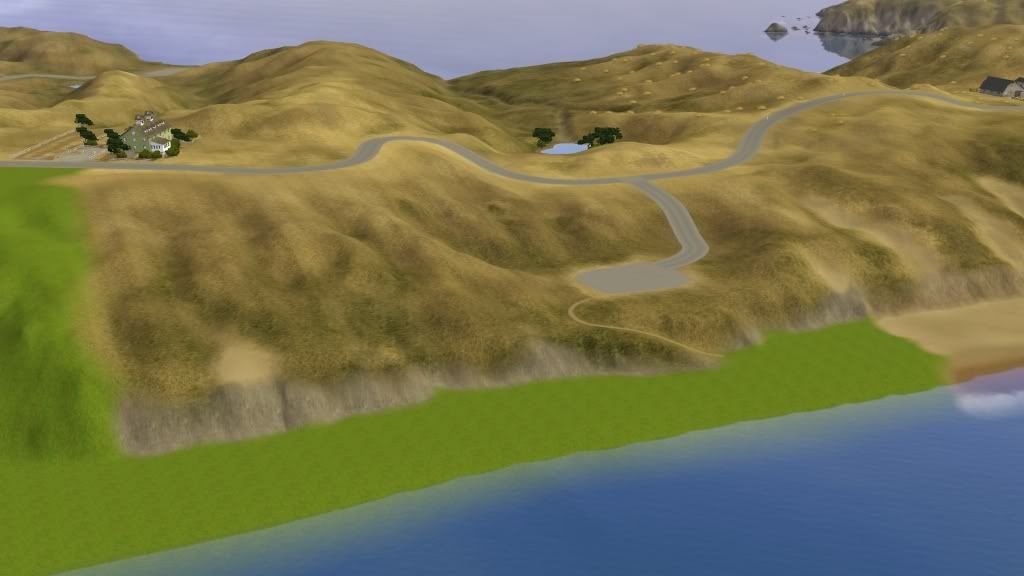
After the green is in place you should do a lot of touchup in the seem between two areas painted at different times. For this you should lightly mix together a few of your worlds most indistinct terrain paints. Dirt and grass are the only things I used for my mixing.For the grass I would recommend using a 10 on the size, a 10 on the opacity ,and a 0 on the last one. The dirt should have a size of about 20 and an opacity around 5.
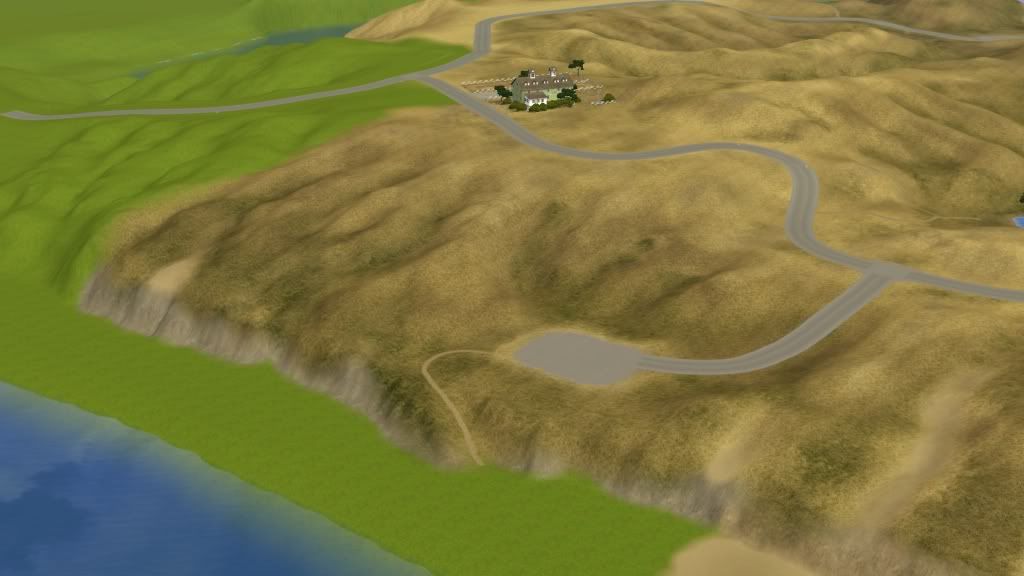
Our next step is to bring back the sand and rock we covered over while painting the grass. If you're doing this right your terrain should come out looking kinda like this. Just use slightly lighter paint setting than you used in the first step.
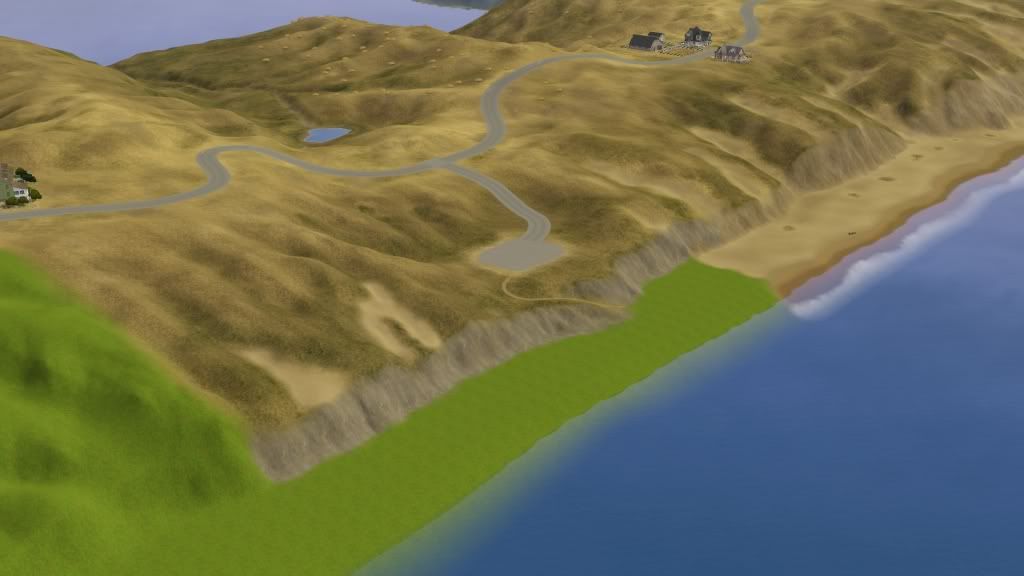
Before doing anything with the sand we should first paint the rock. Here is how mine came out . This rock is a mix of four different terrain paints all stuck together. There is a base , a slightly darker shade, a light one ,and a beige one. The base should go on first with the other following it in their current order . Each layer of color should be lighter than the one before.
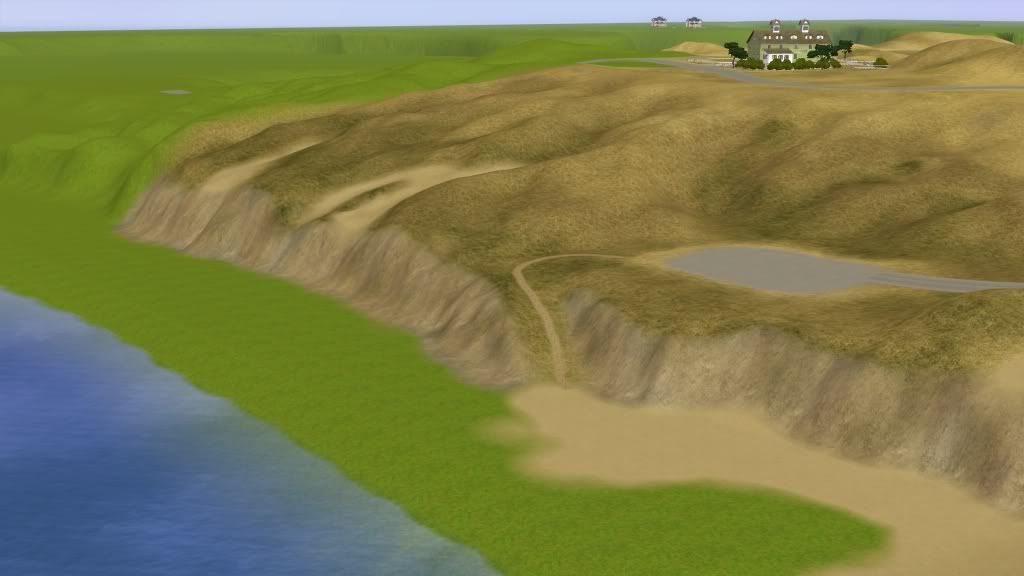
Since the sand, on top of the cliffs, looks pretty bland it's time give it a little more texture. We will start this by putting a very thick coat of beige rock on it .Your paint settings should be 10 size,25 opacity,and 5 falloff .Almost all of sand should be covered over before we begin the next step. Once the sand is barely visible you should lightly repaint the sand where it was before. The texturing of it should be a little rougher with a noticeable change in color. Next, we will lightly add a little dirt,your lightest shade, to this mix.This should be done with the following setting settings: 15 size,7 opacity, and0 falloff. After that add a little bit of your green to it.For this you should do nothing than have to place a few light tap of 9 size, 10 opacity, and 15 falloff. You should come out with something that looks similar to this.
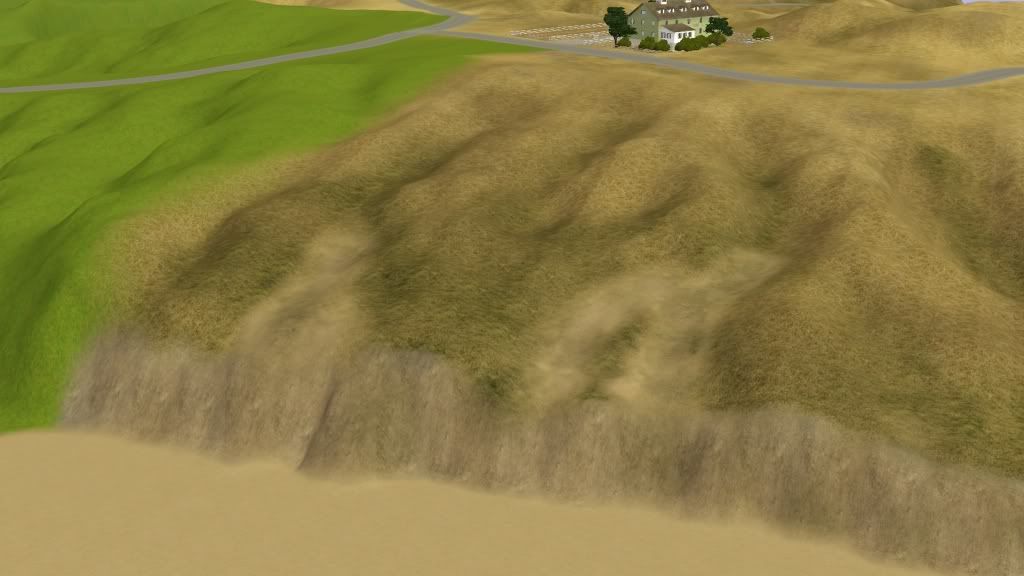
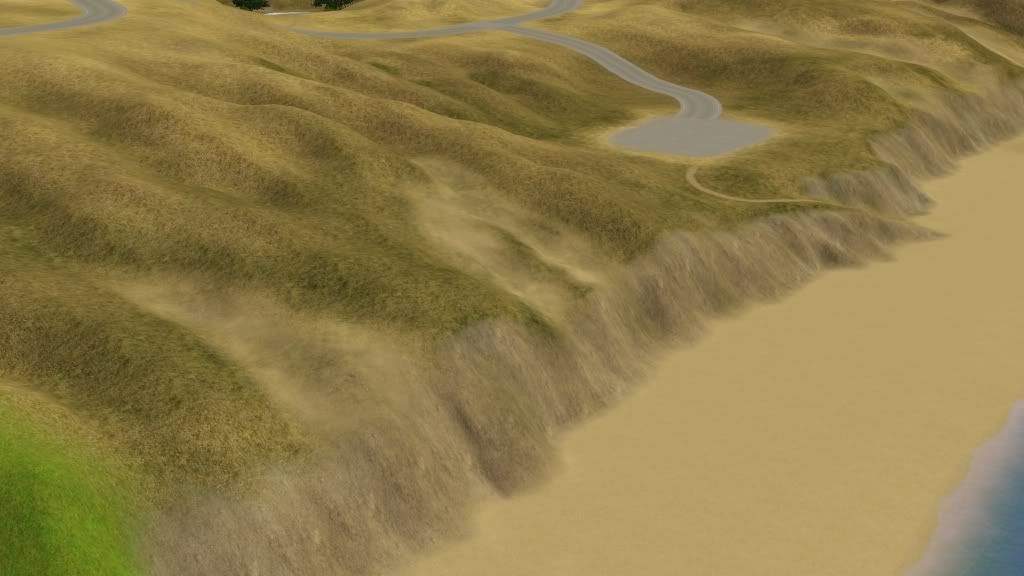
There's not much left to due with the terrain except the beach .Here is a picture that shows how it looks after doing the first phase of beach painting. If you accidently paint the base of the cliffs don't worry. You can just go repaint that at the end.
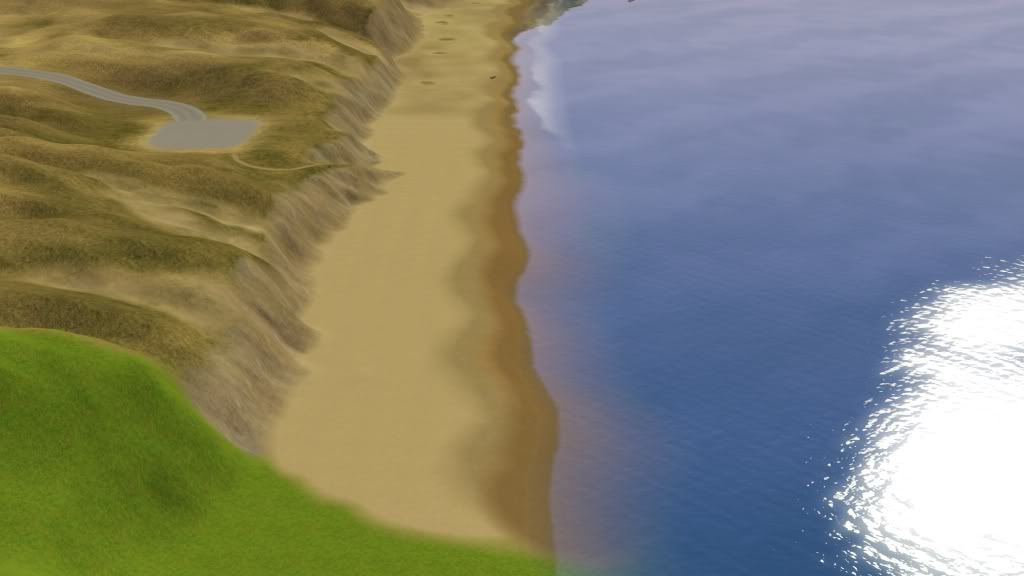
and after the second
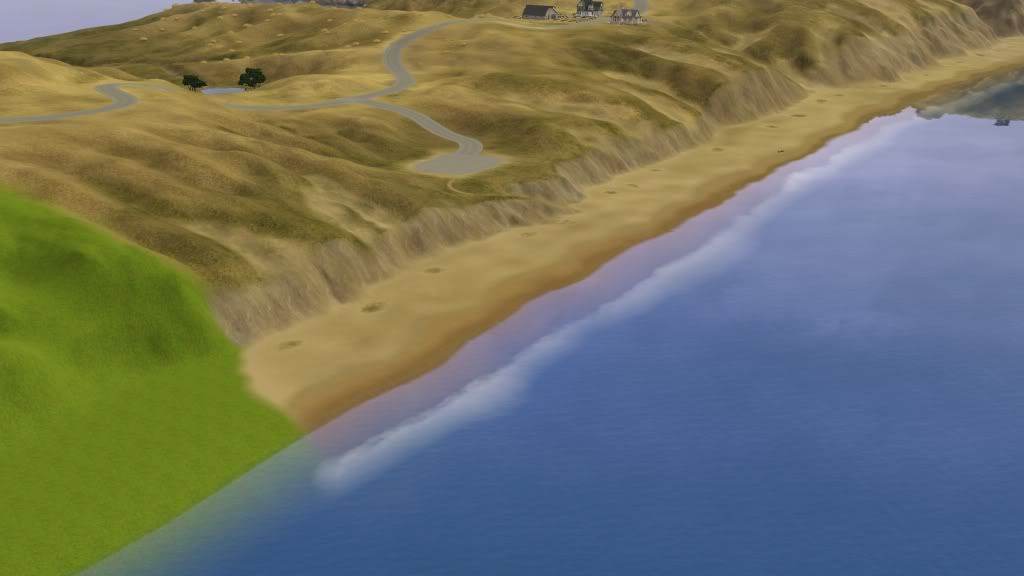
and ,well, I would say this section of terrain is done. The same goes for this tutorial . I hope you all found this helpful.
One small thing to note. EA recommends using only eight textures for each 256x256 chunk of land .According to them more then that number of textures will cause lag. Since it would be very difficult to view these chunks by just eyeballing it EA has included a tool in CAW to view them. To use this tool simply click on view in the upper right. You should then see , on the upper quarter of the list ,a button that says show chunk boundaries. Click on it . Chunks that have more than eight textures will show red, while those with fewer than eight will show green. If you are creating a world off of this tutorial all of your boundaries will probably turn out red. In this tutorial I used about 6 grasses, 2 dirts, one asphalt , 4 sands, and 4 rocks. At first I thought this method of terrain painting would cause a lot of lag. After booting up the game and starting up Reyes, the world used in this tutorial, I found no performance issues. The world ran perfect. So, if somebody has a good computer , they can use more than eight paints without fearing lag, but if you're on an old low end machine then I would recommend just sticking to eight.
 29th Dec 2011 at 9:34 PM
Last edited by Ouerbacker : 7th Apr 2012 at 8:16 AM.
Reason: I spelled tutorial wrong by accident.
29th Dec 2011 at 9:34 PM
Last edited by Ouerbacker : 7th Apr 2012 at 8:16 AM.
Reason: I spelled tutorial wrong by accident.
 31st Dec 2011 at 8:21 PM
31st Dec 2011 at 8:21 PM
 7th Jan 2012 at 10:07 AM
7th Jan 2012 at 10:07 AM
 7th Jan 2012 at 11:24 AM
7th Jan 2012 at 11:24 AM

 Sign in to Mod The Sims
Sign in to Mod The Sims















